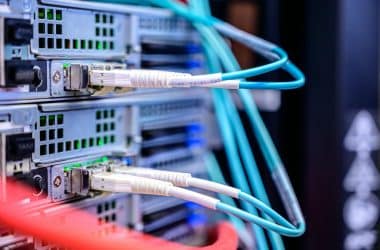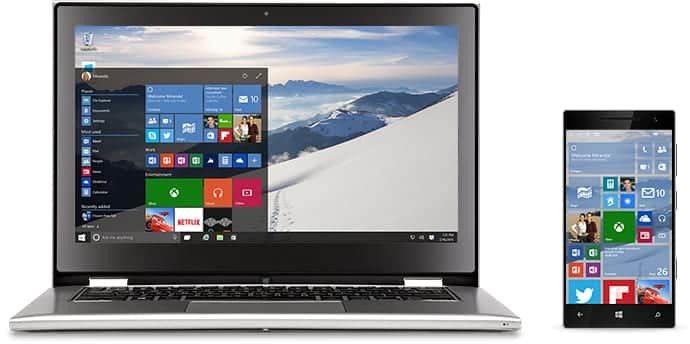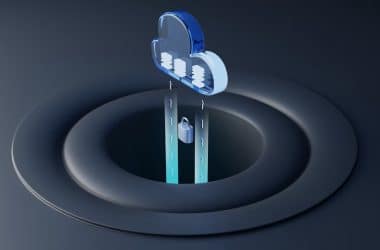By Nicholas Brown.
Fuel economy may be defined as the amount of fuel consumed by a vehicle to travel a certain distance. Fuel economy is measured in MPG (Miles Per Gallon), gallons per mile, litres per kilometre, or L/100 km (Litres per 100 km).
Fuel economy is affected by a wide variety of characteristics, such as: drag coefficient, weight, the efficiency of the vehicle’s propulsion system, friction, driving habits, etc.
Table of Contents
- Determine Fuel and Money Required to Drive a Certain Distance
- How to Determine MPG Rating
- Unit Conversion
- Convert MPG to L/100 km
- Difference Between City and Highway Fuel Economy
- Financial Importance of Fuel Economy and Determining the Overall Fuel Cost of a Vehicle
- Determining Driving or Riding Distance
- Hypermiling (maximizing fuel economy)
- Factors Which Affect Fuel Economy
- Why Luxury and Sports Cars Require More Fuel
Determine Fuel and Money Required to Drive a Certain Distance
You would divide 1 by the MPG figure of your vehicle and the result would be your vehicles gallons per mile rating which you would simply multiply by the distance you are driving. Therefore, if you want to drive to Target which is 20 miles away from you. You would calculate the fuel required by:
1/MPG = GPM * 20 miles = Fuel required to drive to Target in gallons. Multiply the result by the cost of fuel per gallon and that is the cost. Scroll down for more information or if you want to convert this to litres. I would recommend bookmarking this page.
Determination of Fuel Economy
Database of Vehicle MPG Ratings
Note About Fueleconomy.gov: Instead of visiting the link above directly, type: [Year] [model] fueleconomy.gov into Google and a link to the correct page should be in the first few results, if it is not the first result. It will tell you the MPG rating of your vehicle as well as gas tank size.
If you would like to estimate your fuel economy yourself:
Steps:
- Drive it until it almost runs out of fuel (please carry a backup bottle of fuel for this, and you need to be near a gas station, the fuel bottle is just in case you completely run out, be careful).
- Fill it with a little fuel and record how much you filled it with.
- Record the odometer’s current reading.
- Drive it until it almost runs out of fuel.
- Record the second odometer reading.
- Subtract first odometer reading from second odometer reading, then divide the result of that by the number of gallons that you filled it with. The result is your MPG.
- Scroll up to the section titled Determine Fuel and Money Required to Drive a Certain Distance and read it.
Alternative Method (to ensure you don’t run out of gas, but this takes longer):
- Fill the gas tank until the fuel gauge is exactly at the full marker.
- Determine the gas tank size by typing [vehicle year] [model] fueleconomy.gov into Google and a link to the correct page should be in the first few results. You would only need to do this if you have modified your vehicle which may mean that the fueleconomy.gov rating doesn’t match it. You will see ‘Tank Size” in a table.
- Write down your odometer reading.
- Drive until your fuel gauge needle drops to the half tank marker.
- Divide the tank size figure by two (the unit is gallons), the result will be the number of gallons consumed for the experiment.
- Record the odometer reading again.
- Subtract the second odometer reading from the first and the result is miles driven during this experiment.
- Finally, divide the miles driven figure by the number of gallons consumed. The result is your MPG.
Unit Conversion
The gallon used in this article is the U.S. gallon.
Convert U.S. gallons to litres: 1 U.S. gallon = 3.78541178 litres.
Convert imperial gallons to U.S. gallons: 1 imperial gallon = 1.20095042 U.S. gallons
Convert MPG to Gallons Per Mile (GPM), divide 1 by the MPG figure.
So if the fuel economy is 14 MPG, then: 1 / 14 = 0.07142857412 GPM.
Convert GPM to litres per mile (if fuel economy is 0.07142857412 or 14 MPG) = GPM * 3.78541178 = 0.27 litres per mile. To determine the cost per mile, multiply the cost per litre by the litre per mile figure.
So, a vehicle with a fuel economy of 14 MPG at 60 MPH would consume 0.99 gallons of fuel to travel 14 miles without stopping, if the fuel economy was measured while driving constantly at 60 MPH, but this is not realistic, because speed varies, and fuel economy varies with speed.
How to Convert MPG to Litres / 100 km
Example Vehicle: 2011 Chevrolet Equinox LS 2WD I4 2.4 L. In this section, I am converting the city fuel economy which is 22 MPG to L/100 km.
KM per gallon = MPG * 1.609344.
1/MPG = GPM. 1/22 = 0.04545454545 GPM
GPM / 1.609344 = Gallons per km. 0.02824414509 GPKM.
Litres/km = GPKM * 3.78541178 (litres). 0.10691571953 Litres/km.
L/100 km = L/km * 100. 10 L/100 km.
Example 2. Same Equinox Vehicle:
In this section, I am converting the highway fuel economy which is 22 MPG into L/100 km.
KM per gallon = MPG * 1.609344. 32 * 1.609344 = 51 km/g.
GPKM = 1/KMPG. 1/51 = 0.01960784313 GPKM.
Litres/km = GPKM * 3.78541178. 0.01960784313 * 3.78541178 = 0.07422376036 L/km.
L/100 km = L/km * 100. Result = 7 Litres/100 km.
What Is The Difference Detween City Fuel Economy And Highway Fuel Economy
City fuel economy is lower than highway fuel economy because vehicles frequently stop and accelerate in the city, and they drive at more consistent speeds on the highway. Fuel is wasted while vehicles are idling at rest in the city, and additional energy (especially torque) is required to overcome inertia when accelerating from a stop, energy is also required for braking itself.
Financial Importance Of Fuel Economy
Fuel economy is of paramount importance because fuel costs are one of the most significant costs of automobile ownership. This is not the case with all vehicles though, some vehicles exempt from this rule are electric vehicles in general, series hybrid electric vehicles, some parallel hybrid electric vehicles with a very high fuel economy. Also vehicles which have an unusually high cost of maintenance.
Example 1: If the cost of gasoline is $3 USD per gallon, and your vehicle has an MPG rating of 20 MPG, then it would cost $15,000 USD to travel 100,000 miles, and 5,000 gallons (18,927 litres) of gasoline would have been used. That is $0.15 USD per mile.
Or:
- $60,000 USD with a fuel economy of 5 MPG (0.2 GPM).
- $19,999 USD with a fuel economy of 15 MPG (0.066666 GPM)
- $6,000 USD with a fuel economy of 50 MPG (0.02 GPM).
Example 2:
2008 Toyota Tundra 4WD Fuel Economy: 13 MPG city (0.076923076 GPM), 16 MPG highway (0.0625 GPM).
2008 Toyota Camry Fuel Economy: 21 MPG city (0.047619047 GPM). 31 MPG highway (0.032258064 GPM). This means that the Camry can travel an additional 8 miles per gallon of fuel used in the city or an additional 10 miles on the highway.
Camry:
City: 19 gallons of gasoline per 400 miles driven which would cost $51 USD if the cost of gasoline is $2.70 per gallon.
Highway: Highway: 13 gallons of gasoline for every 400 miles driven which would cost $34 USD if the cost of gasoline was $2.70 per gallon.
Tundra:
City: 30.769230 gallons of fuel for every 400 miles driven which would cost $83 USD if the cost of gasoline is $2.70 per gallon.
Highway: 25 gallons of fuel for every 400 miles driven which would cost $67.
After subtracting the fuel cost of the Camry for every 400 miles driven from that of the Tundra, the result was that the Tundra costs $32 USD more to drive 400 miles in the city and $33 more to drive the Tundra on a highway than the Camry.
Automobile manufacturers are trying to improve the fuel economy of their vehicles without sacrificing luxury, durability, safety, and performance. This article is about fuel economy improvement methods.
Determining The Length Of Your Trip
You can determine the distance between two points in miles or kilometers using OpenStreetMap and click the icon with two arrows on it. Enter where you’re travelling from and your destination afterwards. It will also provide you with directions to help you to locate your destination.
In order to determine how much fuel would be required to travel to your destination, you would first do what I said above and then follow my instructions at the beginning of this page, but start reading from the very beginning of the article.
After determining distance in miles or km using Google Maps, read the note above about fueleconomy.gov and then convert your MPG rating into GPM as I explained and then multiply that figure by the number of miles you will travel. If you are going to drive on mostly the highway to your destination then use your highway MPG rating and the highway distance provided by Google Maps.
Hypermiling To Make The Most Of Your Vehicle’s Old Technology
Hypermiling may be defined as the process of utilizing techniques which maximize vehicle fuel economy. Fuel cost is one of the main causes of hypermiling, and another is environmental awareness. A hypermiler may be defined as a driver which utilizes fuel economy maximization methods.
I would highly recommend using a fuel economy meter to indicate fuel economy changes while you are hypermiling.
There are multiple hypermiling methods, some of which include:
- Removing unnessecary and heavy objects from your vehicle, they lower your fuel economy, but please do not remove equipment which you need, such as your car jack and other emergency tools.
- Instead of making several trips, arrange to take everyone who wants to go out with you and do what you need or want to do on one trip. Do not hitch hike, because that is dangerous.
- Obtain and use a fuel economy monitor for your vehicle.
- Switch off your air conditioning if the weather is cool, and use the fan if necessary (but don’t roll down the windows). On a hot day, using the A/C is actually more fuel efficient than rolling the windows down, as the windows affect drag.
- Don’t drive too slowly, nor too fast, 55-60 MPH are efficient speeds to drive at.
- If you have a high wattage sound system in your vehicle, don’t leave it on all the time, turn it on only when you really want to listen to it. As a matter of fact, don’t purchase a high wattage sound system at all, you should purchase a system which can be turned up to a comfortable and safe listening volume.
1000 watts of power is not necessary, remember that amplifiers require energy, and that comes from your alternator, and you will end up wasting plenty of fuel which could have taken you to places. The larger system and the higher the wattage, the more it will weigh, and the more fuel will be consumed, heavy systems also slow down vehicles.
Factors Which Affect Fuel Economy
Fluid Resistance/Drag
Drag may be defined as the force that resists the movement of a solid object through a fluid, such as air or water. As a vehicle moves, it has to overcome this force which is exerted in the direction opposite to the movement of the solid object, which requires a significant amount of fuel.
Source: Princeton Mechanics.
Where You Drive
More fuel is sometimes required to drive longer distances, unless the amount of time you spend idling on the longer road is significantly less, since idling involves burning fuel without actually using it to move the vehicle, so that is just a waste. This is a factor to consider when considering shortcuts.
Vehicles tend to use considerably less fuel per mile on highways because drivers don’t have to stop and accelerate frequently like they do on regular roads.
Weight
In accordance with the laws of physics, more force is required to move objects of greater mass. In other words, heavier vehicles require more power per mile.
Power Requirements Of Other Items
Items like fans, compressors, heating elements, stereos/radios, computer modules, lights, motors, and anything connected to the cigarette lighter require energy to operate, and that energy is supplied by the alternator, such as electrical items, or via a belt using a belt drive setup, such as many A/C (air conditioning) compressors.
The engine will require more fuel to maintain its speed if it is bogged down with a belt-driven compressor, which is why that affects fuel economy.
Why Luxury and Sports Cars Require More Fuel
The efficiency of luxury and sports cars is affected by the same problems but to a different extent. Luxury cars tend to be large and heavy. Large vehicles have to overcome more aerodynamic drag which is air pushing back against the vehicle.
This means that the vehicle has to burn more fuel to produce more power to overcome that. Drag is actually a tremendous force and very significantly affects fuel economy.
As I said, luxury cars tend to be heavy due to their size as well as additional features, plus their larger engines (which are necessary because their heavy weight), and heavier vehicles require more power. Larger engines are also heavier.
A third factor that affects them is the efficiency of their engines. Larger engines tend to be less efficient.
On the other hand, sports car efficiency is affected by weight, drag, engine efficiency, and engine weight as well but to a different extent. Sports cars tend to have very large engines, and large engines tend to be inefficient, but sports cars are usually smaller than luxury cars and have to overcome less drag.
They are usually lighter but their fuel economy is just as bad and in many cases worse than that of luxury cars due to the inefficiency of their engines.
There is one factor that I didn’t mention in the luxury car section above. It is that sports cars are meant to be driven fast, and drag worsens as speed increases, not proportionally, but for every little increase in speed, drag increases significantly.
Luxury SUVs compound the issue further (by a wide margin), and are the king of gas guzzlers. If you do need a little extra cargo room, there are hatchbacks, wagons (like the Volvo V90), and crossovers (like the Toyota RAV4) if you need even more than that.




